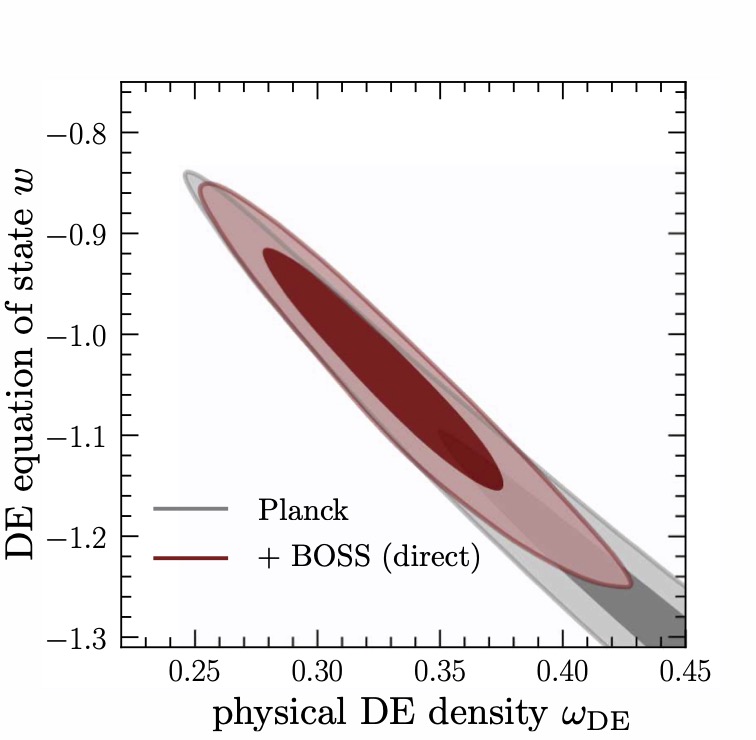
Cosmological parameter constraints
The dramatic progress in the accuracy of cosmological observations in the last decades has marked the start of a data-rich era in cosmology. These data have cemented a new cosmological paradigm, the so-called ΛCDM model. Based on general relativity, this model is characterized by the presence of two components, dark matter (DM) and dark energy (DE), whose nature remains elusive. The quest for deviations from this remarkable picture of the Universe will be the main objective of observational cosmology in the coming years.
The basic parameters of the ΛCDM model can be accurately determined by measurements of the temperature fluctuations of the cosmic microwave background (CMB) data. These values can be used to predict the expansion history of the Universe and the rate at which cosmic structures form, from recombination until today. The comparison of these predictions with observations at lower redshifts serves as a powerful test to challenge the validity of the ΛCDM paradigm. Although a broad range of observations are in agreement with the CMB predictions, local measurements of the expansion rate of the Universe and the amplitude of density fluctuations show intriguing differences. These tensions could signal a problem in the ΛCDM paradigm.
The solution to the puzzles presented by these tensions requires us to accurately reconstruct the expansion and structure growth histories in the Universe, over a wide interval of cosmic time. Analyses of the large-scale structure (LSS) of the Universe based on galaxy clustering measurements are playing a crucial role in this endeavour.